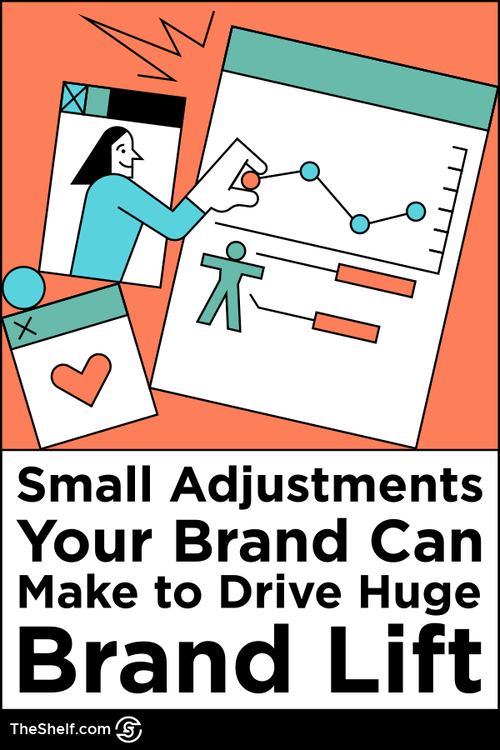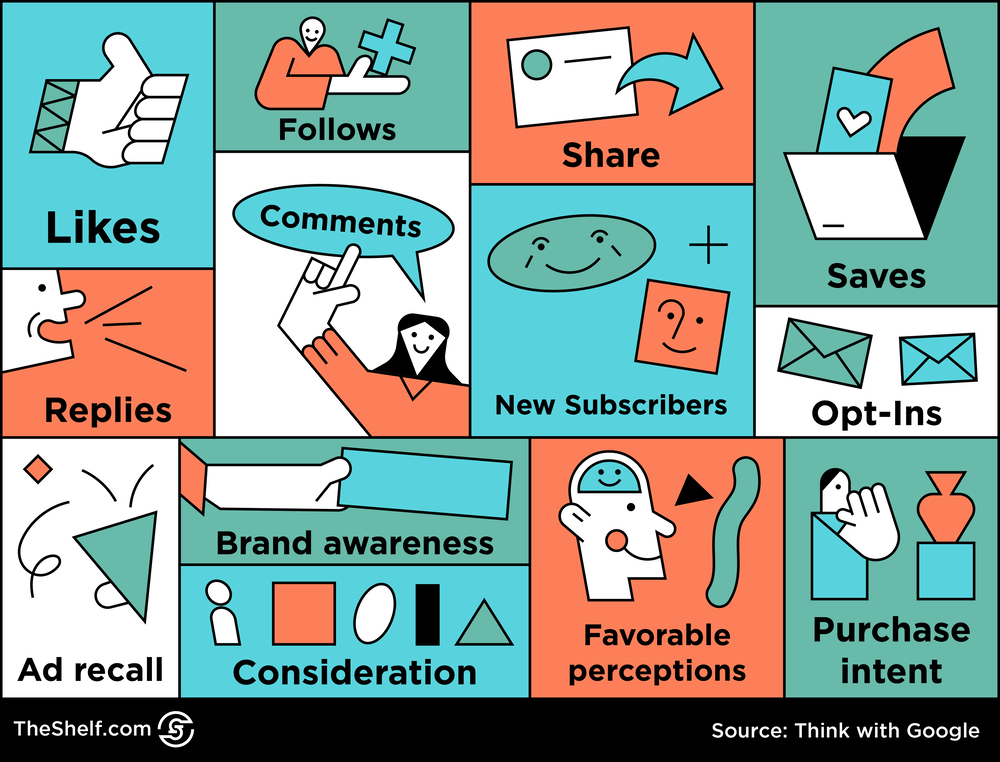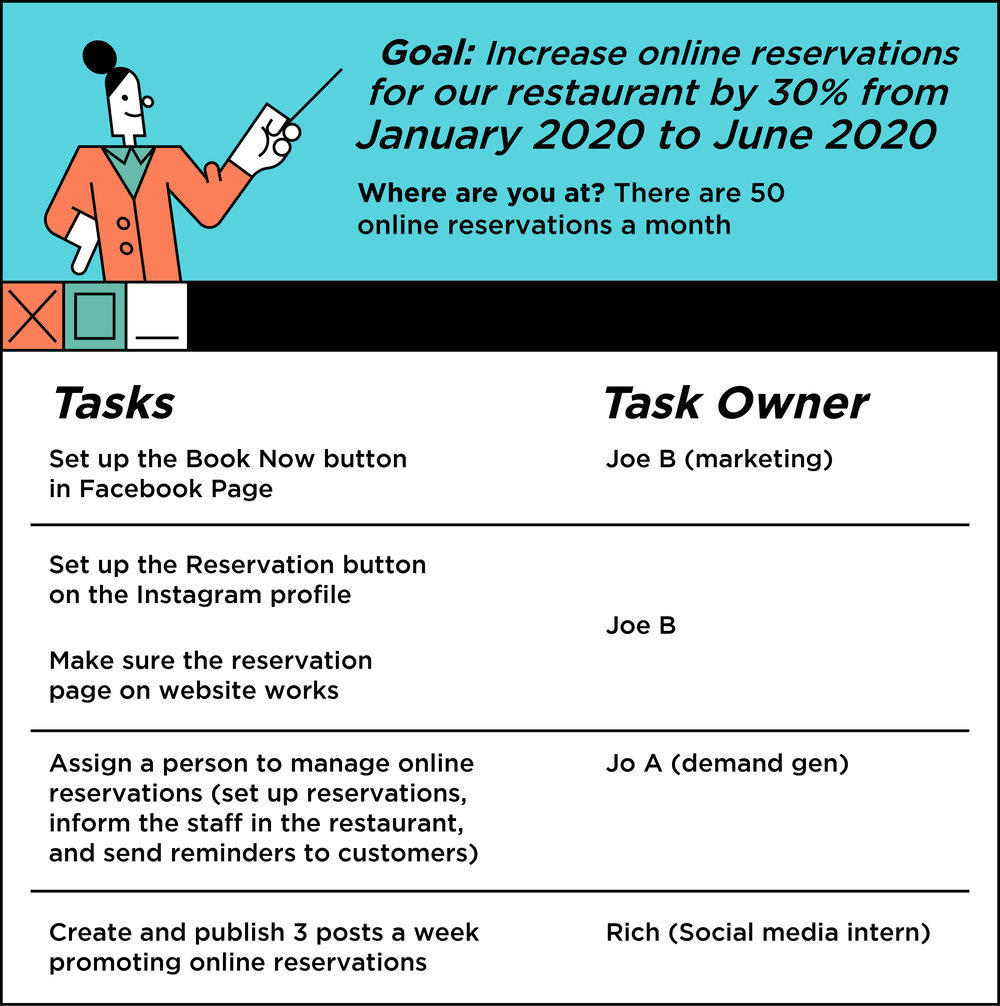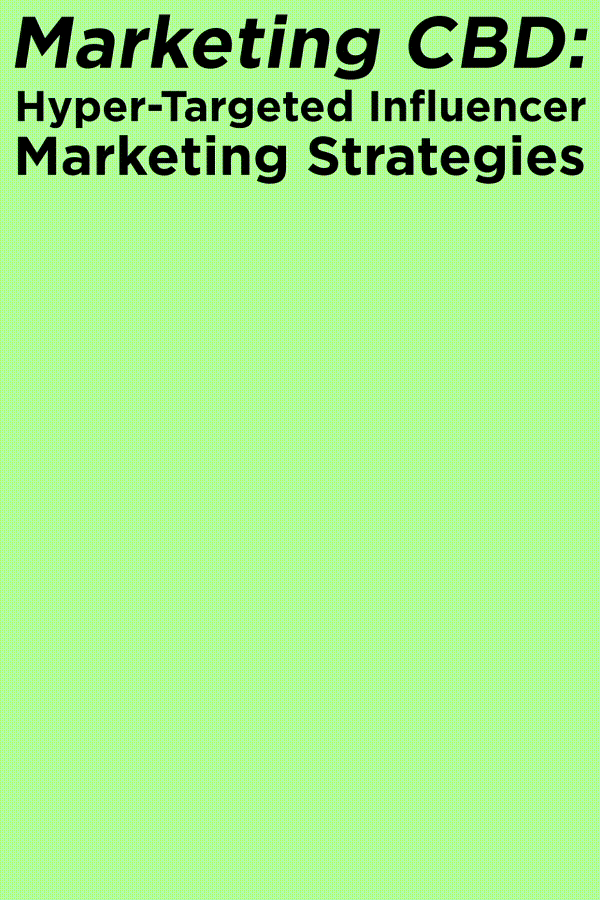New year. New goals. New ideas. It’s the perfect time to talk brand lift. Now, there are small things you can do to increase your brand lift, even before you get knee-deep into your game-changing strategy for 2020. Things like updating your online info, connecting your social media accounts, and using insights from your Google Analytics to determine what you can optimize in your non-campaign, daily social media engagement are simple things you can do to drive brand lift without rounding up your entire marketing department (or hiring a bunch of contractors).
So, Here’s the Deal with Brand Lift
What is brand lift? Brand lift is the increase in the interactions customers have with your brand after you run a campaign. Specifically, brand lift measures the direct impact your campaign has on the typical metrics you want to know about with a social media or digital marketing campaign – likes, follows, shares, saves, replies, comments, new subscribers, opt-ins… that sort of thing.
Beyond that, brand lift is also looking at other important metrics, like these provided by Think with Google:
- Ad recall
- Brand awareness
- Consideration
- Cost per
- Favorable perceptions
- Purchase intent
- Overall interest
- Changes in organic search organic search activity

Brand lift is made up of a group of metrics that we monitor for every infleuncer campaign.

Brand Lift: A 7-Day Plan to Get Big Results with a Few Small Changes
To set the stage for a decade of butt-kicking #socialmedia campaigns that’ll have people clamoring about your brand, we thought it would be cool to put together a seven-day plan of small things you can do in a few minutes a day that will drive huge brand lift. This isn’t the rock star strategy you installed that’s got your whole marketing team in #hustle mode. And they’re certainly not the full-on brand awareness campaign we wrote about a few weeks ago.
These are small adjustments that may not seem like much but they’re the little things you can do on the train or while you’re waiting for takeout, or during the commercial breaks that will move the needle. After all, understanding what’s driving brand lift in your company will help to make your campaigns better targeted and more effective.
Day 1: Collect Your Data. No Judgments.
Quoting Monique Heart, “facts are facts,” and we can’t do anything if we don’t know where we stand. What’s amazing about marketing is that you can measure everything. Like, seriously… everything. Visibility, engagement, consideration, abandoned carts, completed purchases, the one guy who opened your last email 20 times… for some reason.
So, on Day 1, the only thing to do is to look at the data – all of it. Without making it a big deal, keep a few questions in mind that your data should be able to answer, like:
- What worked
- What didn’t work
- What can be improved upon
- What worked last year that can be repeated this year
- What gave the best results
For solo service providers and small businesses where everybody’s wearing multiple hats, I know you’re probably thinking there are about a million other more important (and urgent) things that need your attention BESIDES getting tangled in those Google Analytics threads. Touché, do it while you watch football… or binge-watch a Netflix show.
If the thought of looking at your analytics has you less than thrilled, think of it a different way. Right now, you’re just gathering information that you can think about and act on later. The point is you have to have that info to even know what to do.
If you don’t have the data for the past year (or you flatline everytime you try to gather the data), it may make more sense to start fresh by identifying the metrics you want to track that are most meaningful to your business, and the end of the first quarter, check out your numbers to make sure your on track to meet your goals.
Day 2: Set and Accomplish an Ultra-Small Goal
Keeping in mind what you learned by looking at your data yesterday, set at least one meaningful goal. This shouldn’t be a “big deal” goal. Yes, it can be a weekly, monthly, or yearly goal. it could also be as simple as using a tool like Lumen5 to turn your most popular listicle into 60-second video instead of taking a lunch today.
Or updating the CTAs across a couple of your social media profiles.
Or updating the team pictures on your about page or social media account.
This is stuff you’ve been meaning to do, or things that would be cool to do, but no one owns the task because it’s only gotten as far as being a cool idea. Try to think of things that directly impact how (and if) people engage with your brand.
You could really blow this one out by writing down a few of those goals (like turning every listicle into a video) and assigning an owner to the task to make sure they go from being ideas to actual processes. But make sure the task is tied to a larger goal. So, yeah… repurpose your listicles, but do it so you can get 100 more site visitors a day, a week, or a month. Remember, it’s easy to lose motivation if you don’t have a goal in mind!

Day 3: Update (and Unify) Your Brand’s Online Info
This really is something you can do during the commercial breaks. Update your company information so your brand looks consistent across platforms. This is easy to do, but also easy to miss.
For instance, when The Shelf first started, we worked a lot more with bloggers than brands. Then we landed more and more clients who were using The Shelf’s influencer platform to find influencers and manage their campaigns. Then we found our larger clients just wanted fully-managed campaigns that we could run for them.
Well, with every addition to our core offering, we needed to change our profiles to reflect those changes. Today, we run a ton of fully-managed campaigns. So, over the years, our social media content, bios and descriptions have evolved to reflect not only what we do, but the culture we’ve created over the years.

Interestingly, we also had to change the CTAs on our site from Schedule a Demo (which worked when we were handling fewer full-service clients) to Schedule a Strategy Session… because our sales team can help clients determine which is a better solution – influencer platform or managed influencer campaigns – to help them reach their goals.
This step is easy, right? And it’s SO HELPFUL for your business and the people who follow you. Go to every place where your business has information online – Google Places, Facebook, Instagram, LinkedIn, your website, Yelp, wherever. Check that every one of your profiles has an updated branding and correct contact info, as well as spot-on info about your business.
I remember when I started working some time ago with a nutritionist and her main pain point was that customers found it hard to get to her place. The problem was that the address on her Facebook page and on Google Maps was not correct. I literally fixed it in 5 minutes and saved us a lot of time in the future!
Don’t know where to start or too overwhelmed to even do it?
- Make a list of all the places where your information is available for your audience. Profiles that you don’t use still count for this list. Think about ALL the places… Googling can also help!
- Go to each one and check the information. Also, this can be an opportunity to update your profile descriptions if it’s necessary
- If there’s an account you don’t have access to, this is a good opportunity to regain that access
- For those accounts or profiles that you don’t use too much, be sure to link to other profiles where people can find updated information about your business
Easy-peasy!
Day 4: Repurpose (or Just Design) Something
It’s true that different people consume content in different ways. The more mediums you can use to share information and relay messages, the greater your chances of being seen and remembered.
This doesn’t have to be a whole big thing with ring lights and a mic that clamps onto your lapel. It can be something easy like having a designer make 600 x 900 graphics to pin to your own branded Pinterest boards.
Or, as I mentioned a little earlier, turning your listicles into short videos that you can share on different platforms.
Or make something a gif, like this one promoting our 5-article CBD series on how to market to different CBD buyers. Clever, huhn?

Day 5: Leverage the Power of Memes and Quotes
A meme? That’s silly… when my business is serious. Well, we all have serious businesses, doll. But people do business with other people… who work at serious businesses. So, let the people part of your business come out and play sometimes. Heck, that’s what social media is for.

Using social media like a person instead of a business helps to humanize your brand and make it more relatable. The meme above is something everyone who works in construction can relate to… as well as anyone who has ever had their roof done.
One thing you really need to remember is that you’re talking to your peers and colleagues a lot of the time, even as you create content specifically designed to compel your customers to take a certain action.

Day 6: Re-Engage Customers by Becoming Relavant
Reconnect with your customers. People that are already your customers should stay within your reach. Try any one of these methods for re-engaging them.
- Interact with individual customers on social media. This is easier on platforms like Twitter or Instagram. Like their photos when appropriate and drop comments now and then. You can even tag a handful of customers in posts you think they would like. The key here is to make sure it’s just a few customers – maybe five or six – and that you have a real reason to believe they would be interested in the post (based on their previous interactions with your brand). A little bit of interest goes a long way!
- Send a survey to your past customers. Easier if you have their e-mail addresses. Create a quick form on Google Forms with questions about your service. You’ll be again in the mind of your customers and their feedback will help you improve your business
- Ask for testimonials. Reach out to people and ask them to send some nice words about your business. Depending on the form you get these testimonials, you can use them to create content on social media, for example
- Share user-generated content. It doesn’t matter if it’s old. If you still sell the same product or simply want to make a #TBT, you can use content your customers have already shared. Besides, reaching out to them to ask for permission to use their content is a good way to keep your business top of mind. We’ve actually written quite extensively on the benefits of UGC, getting great UGC, leveraging UGC to drive sales, and content rights.
- Remind people it’s time for a new appointment: a lot of products have to be bought from time to time. The same with services, you have to take your car to the mechanic, you have to cut your hair, etc. Remind your customers about this… if it looks too difficult to do now, create a plan to make it happen
Set a specific time of the week or the day to use re-engaging customers… and don’t forget to have data and set goals for anything you do!
Day 7: Get Team Participation
One challenge a lot of teams experience is actually success. Haha. Definitely not a bad thing, but when departments are hustling and getting things done, they often don’t really know what’s going on in the other departments. Believe it or not, that can actually slow down company-wide success.
Here’s a simple example. Our team has seen pretty rapid growth on LinkedIn just by letting everyone on the team know when our company page posts something new and providing our own team an opportunity to read, bookmark, and share the content coming out of the marketing department.
If you don’t make a real effort to keep everyone informed and engaged, silos will naturally occur as your team hustles to get things done. Take time to sit down with everybody and let them share with other departments what they’re working on. Getting buy-in from your team can quickly help you increase brand lift.

Conclusion
Although everything I’ve written is pretty easy to do, these steps carry enough impact to boost your brand lift across those key metrics we talked about. At the end of the day, marketing isn’t always about spending a ton of time and resources. It’s about using data to build and optimize your strategies. Welcome to the 2020s!





